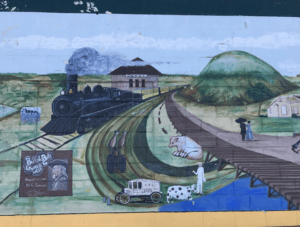Top Story
Date: February 11-16, 2018
Location: Commerce City, CO
Sponsor: Colorado Health Foundation, Commerce City, and Cultivando
Subject Area: Building Healthy Places
Panel Chair: Sarah Sieloff, Center for Creative Land Recycling, Oakland, CA
Background and Panel Assignment
The City of Commerce City, Colorado is located in the rapidly growing Denver-metro area, northeast of Denver in Adams County. The City is surrounded by the communities of Brighton, Denver, Aurora, and Thornton, several wildlife parks (Barr Lake State Park to the north and the Rocky Mountain Arsenal National Wildlife Refuge to the east). Rocky Mountain Arsenal National Wildlife Refuge, once a chemical weapons factory, is now one of the largest urban wildlife sanctuaries in the country1 with over 15,000 acres. It is adjacent to the eastern boundary of the study area.
Commerce City is a Healthy Eating and Active Living (HEAL) Elite Community and is working to continue to increase opportunities for safe and active living in the diverse community through the Colorado Health Foundation’s Healthy Places Initiative. The targeted area that is being studied is located in the southern part of Commerce City, south of 72nd Avenue, east of Colorado Boulevard, west of Quebec St. and north of 56th Avenue. As a whole, Commerce City is 49% Latino, one of the most diverse cities in Colorado.
The study area is closer to 70 percent Latino, with a very high concentration of low-income, mixed documentation status families. According to Adams County District 14 School District (Adams 14) statistics (the school district that serves this part of the city), 83 percent of students are Latino, and 84 percent qualify for free or reduced lunches. Additionally, Adams 14 states that over half of the parents in the district have limited English proficiency, and that over 24 languages are spoken by families. The need for equitable access to HEAL opportunities in this part of the city is pronounced, with higher than average rates of obesity and food insecurity (and accompanying health problems), and many barriers to accessing HEAL.
Panel Assignment/La Asignación
- What can the Commerce City Healthy Places Coalition do to connect underserved community members with existing facilities and resources? Do solutions exist in the Walk Bike Fit plan that community members are excited about?
- What are the existing barriers to HEAL opportunities—real and perceived?
- Are there community safety concerns (real or perceived) that can be addressed through projects and programming that evolves from the Commerce City Healthy Places Initiative?
- What operational and policy changes should Commerce City consider making to continue efforts to enhance connectivity, access, and safety after the grant cycle has ended?
 Summary of Recommendations
Summary of Recommendations
- Match the local population to locally available jobs
- Collaborate with local employers, the Adams 14 School District, and Lester Arnold High School and funders to create training programs for local residents through a modern industrial manufacturing strategy.This will:
- Enhance the level of housing affordability by raising incomes for current residents
- Increase in the number of people living and working within the study area
- Drive more intensive use of alternative transportation
- Implement “tactical urbanism” to address physical, social, environmental, cultural, institutional and other barriers.
- Examples: Farmers markets, pop-up plazas, festivals, street design
- Normalize active transportation by making walking safer and more comfortable
- Timing and automating crossing signals, crosswalk design
- Use art to enhance feelings of pedestrian/cyclist safety
- Strengthen Historic Commerce City’s brand and sense of community
- Develop shared language throughout the community to describe certain features and to foster ownership
- Label districts with wayfinding signage, as identified in the Walk, Bike, Fit Plan
- Respond to rapidly changing community landscape through traditional and non-traditional outlets
- All development decisions, infrastructure improvements, and program investments large or small should be evaluated in terms of how they support or detract from creating a healthy, connected community.
- Collaborate with local employers, the Adams 14 School District, and Lester Arnold High School and funders to create training programs for local residents through a modern industrial manufacturing strategy.This will:
Short Term Recommendations for Colorado Health Foundation Grant Funds
| Project | Cost | Notes |
| Crosswalk Timing/Automation | $15,000 | |
| Crosswalks (20) | $300,000 | Near schools and rec centers |
| Speed monitors | $5,000 | |
| Outreach | $30,000 | |
| 72nd + Quebec Crossing | $15,000 | |
| Trailhead Improvements | $30,000 | Water, electricity |
| Cyclovia | $150,000 | 3 events, $50k each |
| Zoning Code Review | $15,000 | To support manufacturing |
| Insurance | $20,000 | Every Sat., 1 year |
| Wayfinding | $200,000 | Historic Core/Derby |
| $780,000 |
